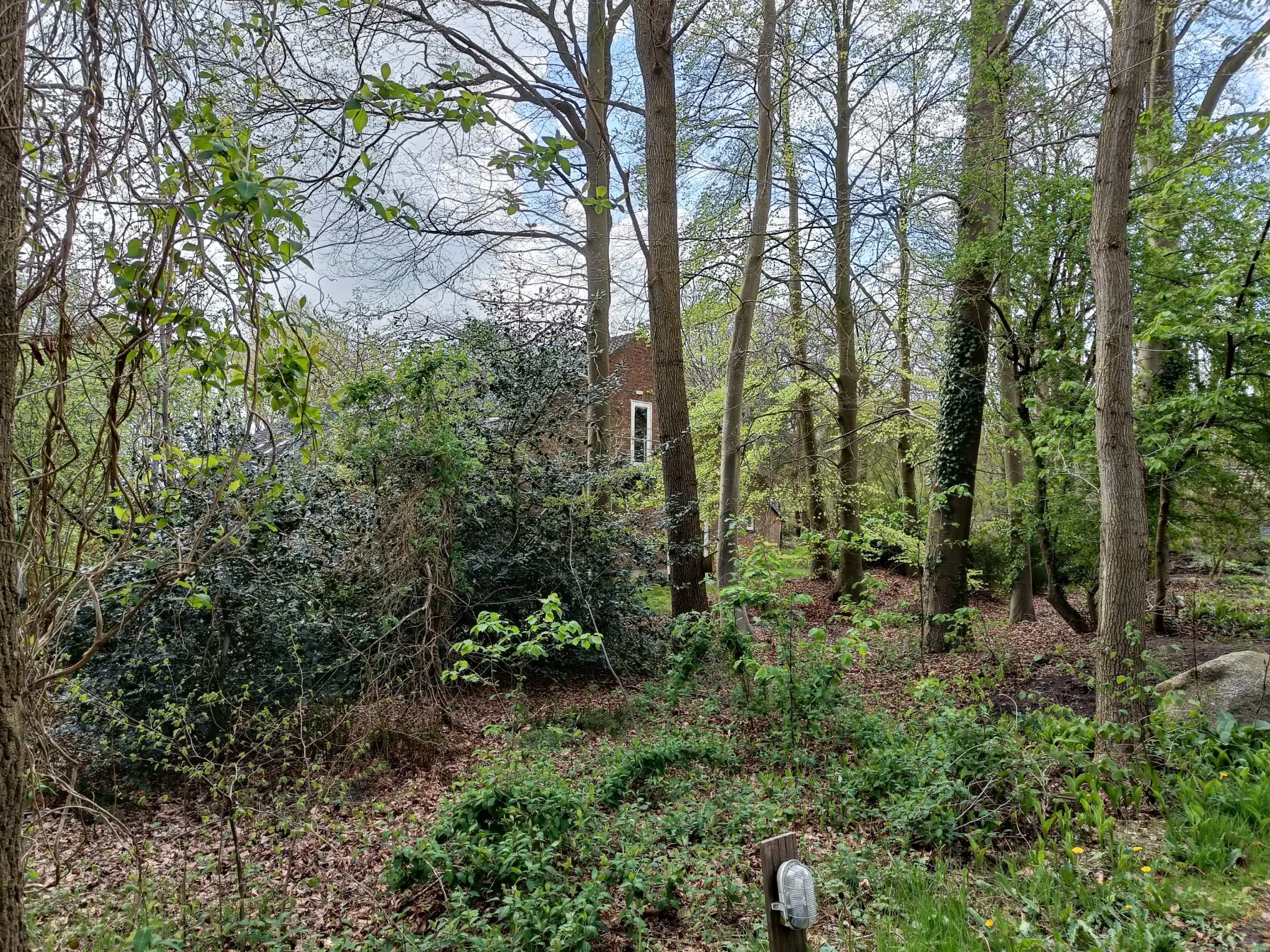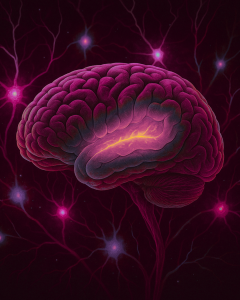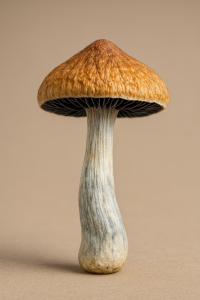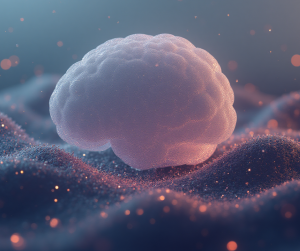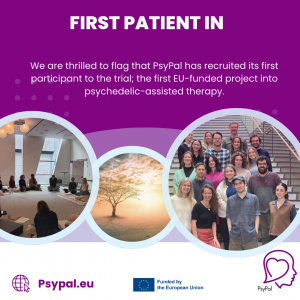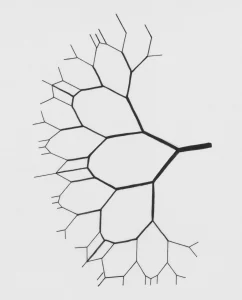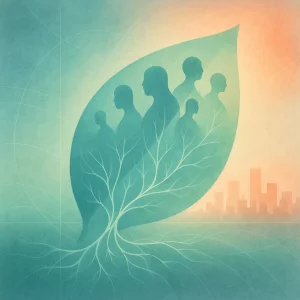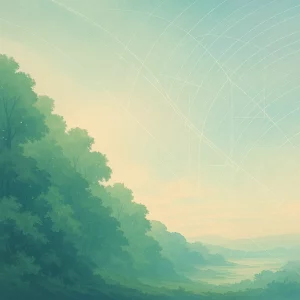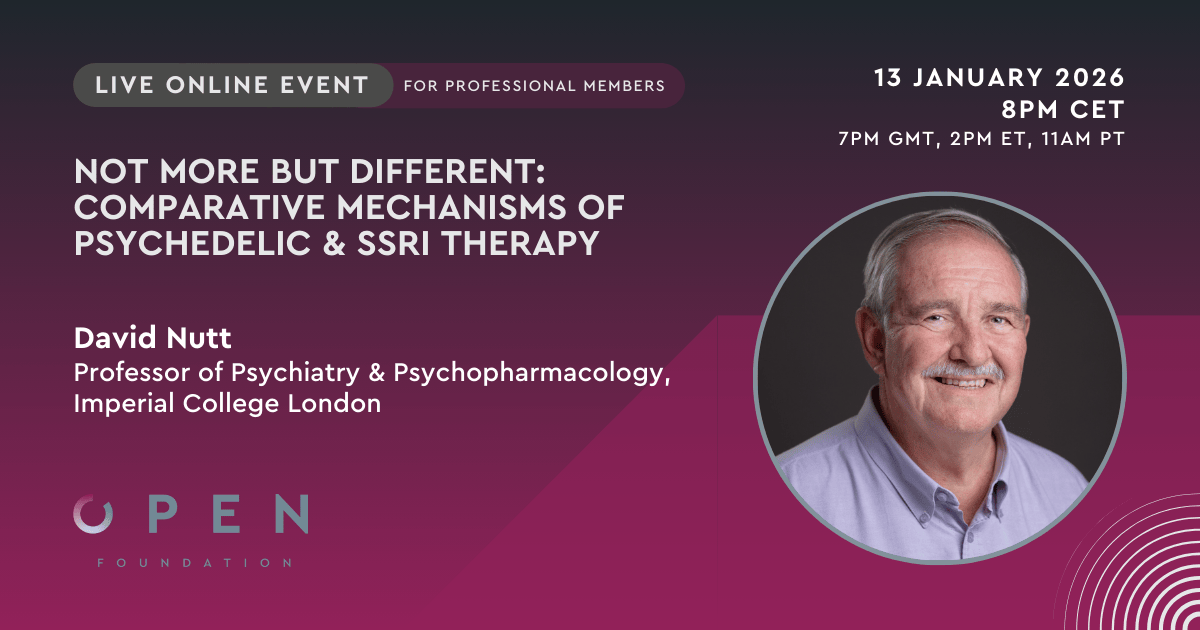From the Field: Lessons from psychedelic practices in the Netherlands is a blog series based on my qualitative research at the Rijksuniversiteit Groningen in collaboration with the OPEN Foundation. The study focused on the conception and practice of safe and beneficial use of psychedelics in group settings in the Netherlands: more specifically in counterculture, ayahuasca ceremonies and truffle retreat centers. Based on in-depth interviews with experienced practitioners, the series highlights and connects diverse aspects of psychedelic practices, from cultural influences through ethics to sensory stimuli. This post dives deep into nature.
Part 1: Lessons on Psychedelic Harm Reduction with PsyCare NL – From the field
Part 2: Dutch Psychedelic Practices Shaped by Culture and Law
Part 3: From the Field: Music in Psychedelic Practices
Part 4: From the Field: Psychedelics and Nature (current post)
Part 5: From the Field: Psychedelics and Autonomy
Part 6: Safe and Beneficial Experiences
The background gradually changed from grey to green as I was driving outside the city toward my first interview. Buildings turned into trees, the highway into small roads leading to a quiet unknown territory. There were but a few cars at the unpaved parking, no people in sight. Singing birds escorted me into the terrain between winding trails and luscious vegetation. Following the sound of frogs, I came to a beautiful pond. I sat there for a while until it was time to go inside. By then, I was already in a completely different state of mind.
The sound of arriving at the first interview location
In stark opposition to the setting of clinical trials and envisioned medical applications of psychedelics, all psychedelic practices included in my research take place in nature. The precise indoor/outdoor configuration varies between practices and circumstances. With cultural events, it is often weather-dependent; the ceremonial part of truffle and ayahuasca retreats typically happens indoors. Yet if we look at the locations where these practices are held, they are either beautiful natural places, or settings where nature is taken care of and thrives.
The healing power of nature

Myriad studies have linked being in nature to positive effects on human physical and mental health. For example, studies on shinrin-yoku (forest bathing) showed benefits to immune, cardiovascular and respiratory systems, as well as mood disorders, stress, and mental relaxation. Attention Restorative Theory suggests that natural environments contribute to recovery from Directed Attention Fatigue. Interaction with nature has been associated with health outcomes in depression, anxiety, diabetes, ADHD, cancer, obesity, migraines, respiratory disease, stress relief, and the list goes on. In an article linking reduced systemic inflammation to frequent exposure to nature, the authors suggest that “incorporating nature exposure into interventions could offer an accessible and cost-effective approach to improving health outcomes”. Is nature a ‘magic cure’, a panacea?
Interestingly, scientific research into the application of nature as a medical intervention encounters similar problems to psychedelic research. First, most studies are focused on short-term effects. Second, blinding is difficult and often impossible to achieve, so the majority of experiments “do not comply with strict criteria for RCTs, and do not qualify as clinical evidence”. Due to the belief that “only RCTs can produce trustworthy results“, health professionals are hesitant to prescribe nature interventions. Third, poor reporting and additional methodological issues result in evidence being “insufficient to establish clinical practice guidelines for its use”. Finally, while there is an abundance of mechanisms for explaining how nature promotes health, it is difficult (if not impossible) to “quantify the mental health benefits produced by nature exposure”.
Still, there is a confluence of evidence from the natural, social and health sciences that experiences in nature and increased psychological well-being are positively associated. At the same time, evidence points to a general decrease in the quantity and quality of opportunities for nature experiences for many people around the globe. As Bratman et al. explain, disengagement with nature can be attributed to increased urbanization, and modern living habits, such as diminished outdoor time and increased sedentary activities and screen time. Over generations, “this disengagement with nature may be partially driven by a negative feedback loop”, where the decreasing availability of nature experiences for one generation creates a lower baseline of reference for the next. With no remote natural areas and meager uninhabited land, the Netherlands is a prime example of this. Thus, when we discuss psychedelic practices in the Netherlands, it is against this backdrop.
Nature in psychedelic practices
According to participants interviewed for my research, the majority of practices include overnight stays, held in venues with accommodations. “For me, the most important thing is that I have locations that are somehow in or around nature”, Anna explained. In most cases, the main structure used for psychedelic practices had an atypical form, such as a yurt, castle or church. Indeed, these were typically in or around nature, that is to say, the structures were small in relation to the surrounding nature (meadows, gardens, forests), rather than large complexes with a small garden. In short, nature was the default ‘setting’ of the studied practices.
Some sort of physical activity in nature was part of all practices considered in my research. Dancing, walking, or other forms of movement in nature sometimes serve as preparation for retreat and ayahuasca ceremonies. For example, in one practice dosing options are discussed during a nature walk. Then, following a meditation in the forest, the way back is walked in silence. The objective is to get participants “out of their minds and into their bodies as much as possible through these forest walks, bodywork and breathing meditation”, Rob told me. It also creates a set and setting, which “allows [participants] to feel safe going into the experience, and also feel safe during the experience”. In addition to their preparatory role for ceremonies, walks in nature were also mentioned as psychedelic practices on their own, in counterculture and in ayahuasca circles. For example, during a 4-day long ayahuasca retreat, the last day was dedicated to a nature walk with a smaller dose.
For facilitators in counterculture, being away from the city contributes to a safer and more beneficial psychedelic experience in quite a direct way. As Chris put it, “when you… need a breath of fresh air, you walk into a tree instead of a café in the Leidseplein”. -“Or a car”, Carla added; -“or drunk people”, Chris completed the picture. Yet in all practices, nature is not reduced to its external benefits, being a good ‘setting’, or to what can be gained from it, like creating a good ‘set’ and promoting a safe and beneficial experience. Instead, it is discussed in terms of meaningful and caring relationships. For example, similar to cultural and religious holidays, psychedelic events in counterculture often celebrate peak points in natural cycles, like the seasons (a spring celebration), or moon cycle (full-moon parties). Carla’s bold statement, that “the main point in our ideology is that we don’t have an ideology”, was immediately supplemented with an exception: “But we do all agree about a few things. And that is that nature is important, so we want to take care of everything that’s green [here], and we want to make it beautiful for everybody to enjoy.” Philosophically, retreat guides brought up the notion of God as Nature, as developed by Dutch philosopher Baruch de Spinoza. From this stance, “connecting with nature through a forest walk, spending time in nature, honouring nature… are important aspects of the ceremony”. In counterculture, Cor described a philosophical shift “from [Huizinga’s] Homo Ludens, which is creative, playful, to Homo Florens, which is flowering”.
Having said that, facilitators of ceremonies also recognized that at the height of the experience, participants can get distracted easily and scatter when outside, making it difficult to ensure their safety. Albert shared that in the past he held ceremonies in a private forest, where participants walked outside a lot. It was “amazing, but sometimes also a bit chaotic”. During ceremonies with higher doses, facilitators take precautions to ensure participants’ safety. Typically, when a participant feels like going outside, they are escorted by one of the facilitators, who stays with them until they can go back in. In parallel, practitioners have found different manners to mitigate the ‘risks’ of being in nature, by balancing them with other factors, namely dose and experience. It can be, for example, a low-dose nature walk, or a high-dose walk open only to experienced community members.
From Contact to Connectedness: Relationships with Nature
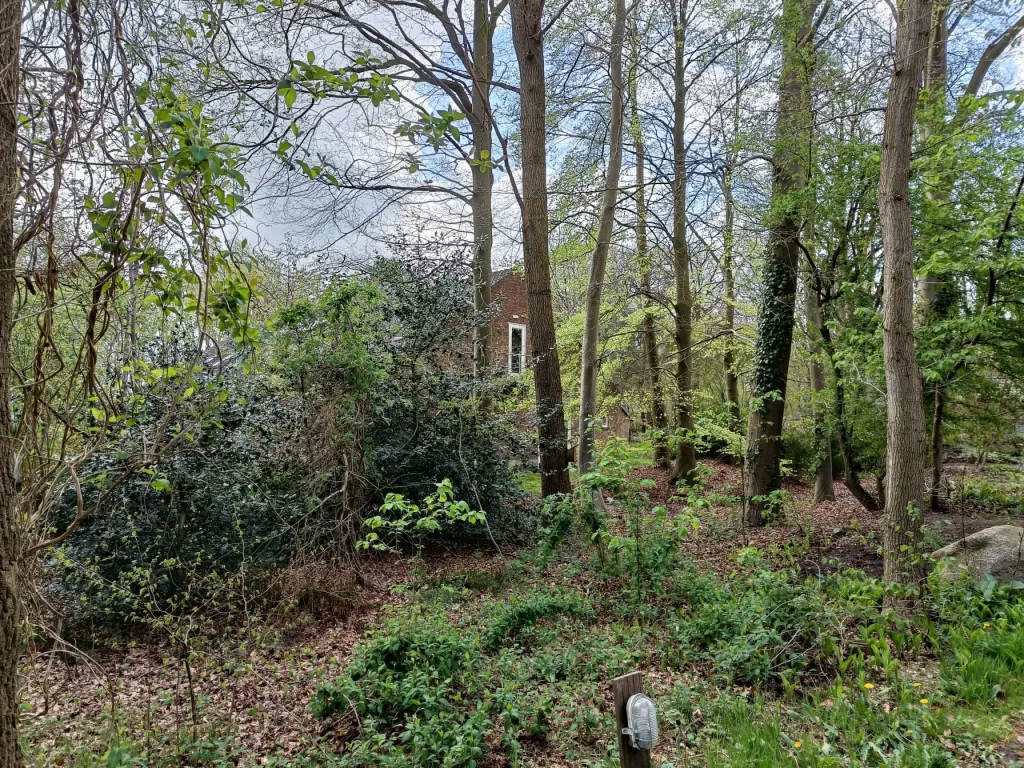
Understanding the various ways in which nature and psychedelic practices interact requires going beyond seeing nature merely as ‘setting’, the surrounding of practices. We need to broaden our concepts. Nature-connectedness or relatedness is one of the most discussed psychedelic phenomena. Research has found links with mental benefits, such as positive affect, ability to reflect and happiness. Ecologist and researcher Sam Gandy differentiates between nature contact and connectedness: where the former speaks of “passive or superficial interactions with nature”, the latter connotes “actively connecting to and engaging with nature”. Imagine a family picnic in the woods. While the parents are preparing food and chatting about work (nature contact), the little children are climbing trees, thoroughly examining any insect they encounter (nature connectedness). In our contemporary culture, this genuine fascination or awe seems to be lost at quite an early age. As Cor phrased it, even for children “it’s a big step to drop your computer, [look] at a tree and think ‘wow!’”.
The association of psychedelics and nature relatedness seems to create a synergy, enhancing and expanding health benefits. An altered state can grant us that opportunity to rediscover nature like a little child, to be fascinated and curious about it (‘wow!’) instead of recognizing and discarding (‘oh yeah, trees, been there, done that’). It can make us feel differently towards nature, feel that we are part of it, develop a deeper relationship with nature, going beyond its definition as a flat background or a mere ‘setting’ for our experiences.
From Setting to Substance

Nature can influence the ‘set’ and be an integral part of the ‘setting’, but we should not forget the ‘substance’ component. Psychedelic compounds are naturally found in various plants, in mushrooms and even in animals. Before labs and dealers came along, finding them required familiarity with the local natural environment. In science, they were primarily the interest of biologists and botanists rather than chemists and psychologists. The change of focus from natural organisms to chemical compounds was recently criticized by mycologist Paul Stamets. In his brilliantly titled lecture “Nature Relatedness: Happens Better in Nature Than in a Hospital”, he gives the following statistics: out of 198 registered psilocybin trials on www.clinicaltrials.gov, “49 trials have been completed with a molecule, and only one trial completed so far with a mushroom”. These numbers confirm Cor’s protest about the distribution of financial investment in science. As he phrased it, “only 5% of the money… goes into [investigating] natural intelligence, and 95% goes into artificial intelligence”. A rose is a rose is a rose, you may think. However, comparing the effects of a mushroom extract against chemically synthesized psilocybin in mice, a recent study suggests that the extract “has a more potent and prolonged effect on synaptic plasticity” than the synthetic compound.
The history of synthetic compounds is very short in comparison to the various uses of plants by humans, including as medicine. In ceremonial practices in the study, all ingested substances are plants, mushrooms and their derivatives (e.g. mushroom tea). Ayahuasca traditions can help us grasp some of the deeper and more complex entanglements of what we call ‘the ingested substance’ and nature. Also called Yagé, Hoaska or Daime, the ayahuasca brew is a mix of local plants. As such, its ingredients are dependent on the geographical location of the tradition’s origin in the Amazon. For example, chacruna, a plant of the lowland Amazon, is replaced with chagropanga in the highland jungle. Certain local plants are considered family. In the Amazonian tradition Albert ascribes to, caapi (or ayahuasca vine) and tobacco are family. This is why they are both part of the ceremony, where drinking ayahuasca follows sniffing tobacco juice. As he explained, the tobacco prepares the person for the ayahuasca, in cleansing the sinuses and giving “mental clarity”. The ‘substances’ are not seen as separate ‘materials’, which can be mixed and matched at will; they are bound by relationships. Furthermore, each of them can carry multiple meanings, and be used for multiple purposes. Let us look at another example. The commonly-used ayahuasca instrument, Wayra Chakapa is made of leaves bundled into a fan, which makes the sound of the wind (‘wayra’ in Quechua). “Actually it’s called Wayra sach’a, so ‘wind through the forest’. So it’s this sound, but it’s also like an astral cleanser.” Is this nature-based object a musical instrument, a healing accessory, a spiritual artifact? Any of these classifications will miss some of its meanings.
Learning about indigenous worldviews can also shed light on how much our approach to psychedelics and to the psychedelic experience is culture-based. “The central piece of this Amazonian tradition is the ayahuasca vine, the caapi, which is seen as an entity with a wisdom incomparable to any human wisdom or intelligence”, Albert told me. “In our culture, humans are seen as the pinnacle of creation; in the Amazonian context, that’s different… which, for me, is really important to stress”. The significance of this hierarchy is that rather than the shaman, it is the plant that guides the psychedelic experience; it is the plant that guides the shaman in music-making. What does this mean for participants? “Many people want something from the plants, and it should be the other way around. Open yourself up to the plants. What do the plants want from you? What do they want to tell you?”
Zooming out to look at the various practices, there seems to be a connecting line in their relation to nature. Not only in the specifics, but in the nature of the relationship itself (pun intended). It is a relation of care rather than an objectifying one. Ultimately, nature is not regarded as something to use or even to be in. It was part of interviewees’ very definition of what they do: “it’s centred around connecting with yourself, connecting with others and connecting with nature”, Rob explained, “looking closely at nature and… trying to see that we’re part of it and that natural substance is an essential part of that.” Finally, Ronald connected all the dots: “[spirituality], self-love, taking care of yourself, taking care of others, taking care of nature, I think it’s a ripple effect that goes through all levels and all layers”.
Interviewees aliases table
| Type of practice | Interviewee alias | Additional info |
| Ayahuasca ceremonies | Albert | Colombian tradition initiated shaman |
| Ayahuasca ceremonies | Anna | Therapist |
| Ayahuasca ceremonies | Anton | Creative and integrative facilitation |
| Counterculture | Carla | Cultural organization chairperson |
| Counterculture | Chris | In charge of cultural activities |
| Counterculture | Cor | Community/institution co-founder |
| Retreat centre | Rob | Microdosing coach |
| Retreat centre | Ronald | Musician, individual coach |

